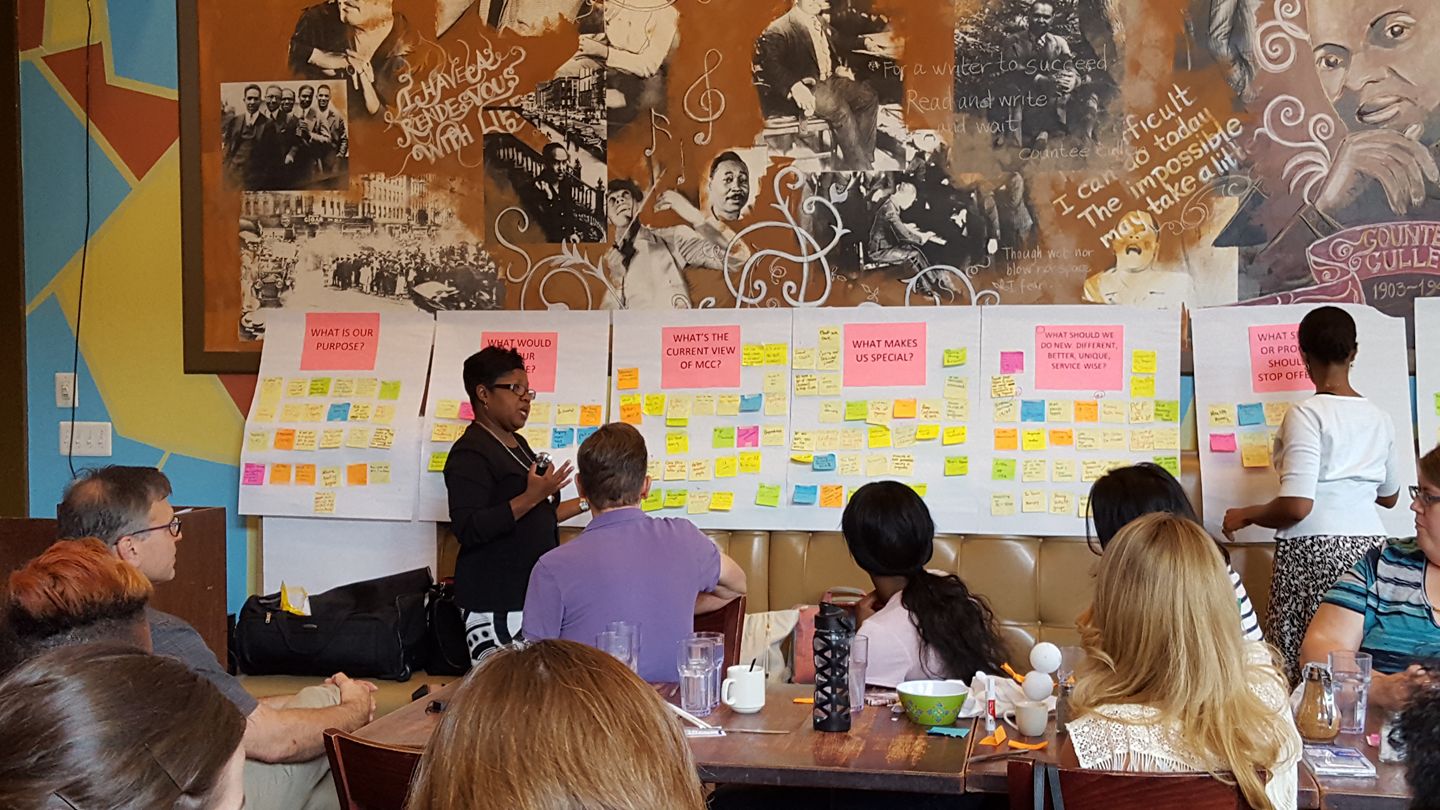Back in the 1980’s, I learned how to facilitate storyboarding sessions. They were called storyboarding because they were modeled after the traditional process that Disney and others used to design their live-action cartoons. The program I was in certified us to adapt it to organizational work, introducing it as an easy, fun, and engaging process that made innovation and change management simple.
Instead of suddenly imposing a significant change upon employees, this process would gain their involvement and commitment, starting with ideation posed as a question or a statement. For example, “create or design a unique onboarding process” would be the header or topic, and then we’d create subheaders for the group to react to in discussion, gaining greater buy-in from the beginning!
I tried it, and it worked! Our topic was “Design an Exceptional Customer Experience.” All employees participated in groups of 15 or less for half-day sessions. Engagement and excitement went through the roof. After the first session, employees were coming to my office to ask when it was going to be “their turn?” To add a little icing on the cake, we asked for a volunteer group of employees to create a t-shirt design to cement our new way of delivering an exceptional customer experience. I may still have that t-shirt today.
Why was it a success?
My new #1 rule of change: if you let them help change it, they’ll embrace it. Think of it this way – you’re not telling them to build it; you’re inviting them to join in solving a problem. Employees are on the front line of problems, but it’s at the top that problems are “solved,” only to get poked at by those on the front lines.
Remember the Southwest Airlines system failure in 2022? The front lines had been telling the leadership about the system issues, but the folks at the top failed to respond appropriately and timely. So Southwest passengers suffered along with their front line workers. Out of this experience came my three favorite words:
Different. Better. Unique.
If you want something different, better, and unique from your employees and leaders and to move away from the tried and true, you’ve gotta ask for it. Try something like,
What is a [different, better, or unique] approach to this?
I still get to facilitate these experiences when I work with executive and leadership teams, only instead of designing an exceptional customer experience, our headers include topics like “Create A High-Performance Work Culture” and “Build a Better [company or team],” and “Design a Unique Onboarding Experience.”
Remember, leadership isn’t about having all the answers; it’s about being willing to learn and grow alongside your team. Embrace the journey and lead with courage.
Pam



